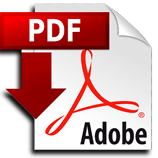ANALISIS PERMINTAAN TAKSI KONVENSIONAL DI TENGAH BEROPERASINYA TAKSI ONLINE DI KOTA MAKASSAR
Abstract
Keywords
Full Text:
PDFReferences
Acemoglu, Daron & Friends. 2016. “Microeconomicsâ€. Global Edition. Pearson Education Limited. England.
Anwar, Ahsani Amalia, 2017, Online vs Konvensional: Keunggulan dan Konflik Antar Moda Transportasi di Kota Makassar, Etnosia: Jurnal Etnografi Indonesia, Vol2, edisi 2
Angraini, Nur Fitriah, 2017, Analisis Faktor-Faktor yang Mempengaruhi Konsumen Menggunakan Jasa Ojek Online (Studi Perbandingan Go Jek dan Ojek Online Syar’i), Fakultas Ekonomi dan Bisnis, Universitas Muhammadyah Surakarta.
Bento, Antonio M et al. 2003. “The Impact of Urban Spatial Structure on Travel Demand in The United Statesâ€. Policy Research Working Paper. The World Bank. March Edition.
Case, Karl E & Friends. 2012. “Principles of Economicsâ€. Tenth Edition. Prentice Hall. USA.
Cats, Oded et al. 2013. “Effect of Real-Time Transit Information on Dynamic Passengger Path Choiceâ€. Centre for Transport Studies. SE-100 44. Stokholm.
Elliot, Greg, Sharyn Rundle-Thiele, David Waller. 2012. Marketing, Edisi 2, Australia, John Wiley & Sons.
Hal, Robert E. & Leiberman, Marc. 2010. “Microeconomics: Principles and Applicationâ€. 5th Edition. Cengage Learning. USA.
Henderson, James Mitchell & Quandt, Richard E. 1985. “Microeconomics Theory: A Mathematical Approachâ€. Third Edition. McGraw-Hill Book Company. Aucland.
http://makassarkota.go.id/110-geografiskotamakassar.html (diunduh15-10-2018)
http://berita-sulsel.com/2017/03/31/data-jumlahpenduduk-makassar-tahun-2015-hingga-2017/(diunduh, 15-10-2018)
Fajariah, 2017, Analisis Permintaan Jasa Ojek Online di Kota Makassar, Skripsi Fakultas Ekonomi dan Bisnis, Universitas Hasanuddin Makassar
Juniawan, Eko Jefry, dan Kusuma, A.A.Gede Agung Artha, 2017 Faktor-Faktor Yang Mempengaruhi Customer Switching dari Taksi Konvensional ke Taksi Online, E-Jurnal Manajemen Unud, Vol. 6, No. 10, 2017: 5460-5488, ISSN: 2302-8912
Karlan, Dean & Morduch, Jonathan. 2014. “Microeconomicsâ€. McGraw-Hill Education. USA.
Mankiw, N. Gregory. 2012. “Principles of Economicsâ€. Sixth Edition. Cengage Learning. USA.
McFadden, Daniel. 1974. “The Measurement of Urban Travel Demandâ€. Journal of Economics 3. North Holland Publishing Company.
Mishalani, Rabi G. & Friends. 2006. “Passenger Wait Time Perception at Bus Stops: Empirical Results and Impact on Evaluating Real-Time Bus Arrival Informationâ€. Journal of Public Transportation. Vol 9. No 2.
Parkin, Michael. 2014. “Microeconomicsâ€. Eleventh Edition. Pearson Education, Inc. United State of America.
Perkins, Dwight H. & Friends. 2001. “Economics of Developmentâ€. Fifth Edition. W. W. Northon & Company. New York.
Pindyk, Robert S & Rubinfeld, Daniel L. 2013. “Microeconomicsâ€. Eighth Edition. Prentice Hall. USA.
Prabawati, Dwi Karyayuris, 2017, Penerapan Strategi Pemasaran Jasa Transportasi Taksi Konvensional Blue Bird Dalam Menghadapi Persaingan Jasa Transportasi Berbasis Aplikasi Online di Surabaya, Sekolah Tinggi Ilmu Ekonomi Perbanas Surabaya
Rayle, Lisa. Et al. 2014. “App-Based, On-Demand Ride Service: Comparing Taxi and Ridesourcing Trips and User Characteristics in San Franciscoâ€. University of California Transportation Center (UCTC). Working Paper.
Schaller, Bruce. 2005. “A Regression Model of The Number of of Taxicab in US Citiesâ€. Journal of Public Administration. Vol 8. No. 5.
Slavin, Stephen L. 2014. “Microeconomicsâ€. Eleventh Edition. Mc Graw Hill Education. New York.
Souche, Stephanie. 2010. “Measuring the Structural Determinants of Urban Travel Demandâ€. Journal of Transport Policy. Elsevier.
Todaro, Michael P & Smith, Stephen C. 2012. “Economics of Developmentâ€. 11th Edition. Addison-Wesley. Pearson. United States of America.
Varian, Hal R. 2010. “Intermediate Microeconomics: A Modern Approachâ€. Eight Edition. WW Norton Company Inc & WW Norton Company, Ltd. New York & London.
Wang, Xin & Huang, Hai-Jun. 2013. “BI-Criteria System Optimum Traffic Assignment in Networks with Continous Value of Timeâ€. Promet – Traffic and Transportation. Vol 25. No 2.
Wang, Yuanqing et al. 2013. “Study of Modal Shifts to Bus Rapid Transit in Chinese Citiesâ€. Journal of Transport Engineering. May.
Waters, W.G. & Yong, Jong Say. 1990. A Survey of Recent Estimates of Price Elasticities of Demand for Transport. Policy, Planning and Research – Working Papers – Transportation. The World Bank.
Watkins, Karl Edison et al. 2011. “Where Is My Bus? Impact of Mobile Real-Time Information on The Perceived and Actual Wait Time of Transit Ridersâ€. Transportation Research Part A Policy and Practice. Research Gate. October.
Yang, Hai et al. 2010. “Nonlinear Pricing of Taxi Serviceâ€. Transportation Research Part AA. Elsevier.
Yazid,2003, Pemasaran Jasa: Konsep dan Implementasi, Edisi Kedua, Penerbit Ekonisia, Fakultas Ekonomi, UII Yogyakarta.
DOI: http://dx.doi.org/10.30742/equilibrium.v14i2.463
Refbacks
- There are currently no refbacks.
Copyright (c) 2018 Equilibrium: Jurnal Ekonomi-Manajemen-Akuntansi
Indexed By:
Equilibrium by http://journal.uwks.ac.id/index.php/equilibrium is licensed under a Creative Commons Attribution-ShareAlike 4.0 International License.
Office: EQUILIBRIUM
Faculty of Economics and Business Universitas Wijaya Kusuma Surabaya
Dukuh Kupang XXV No. 54 Surabaya, Indonesia 60225
Phone: +62315613231
email: equilibrium@uwks.ac.id















